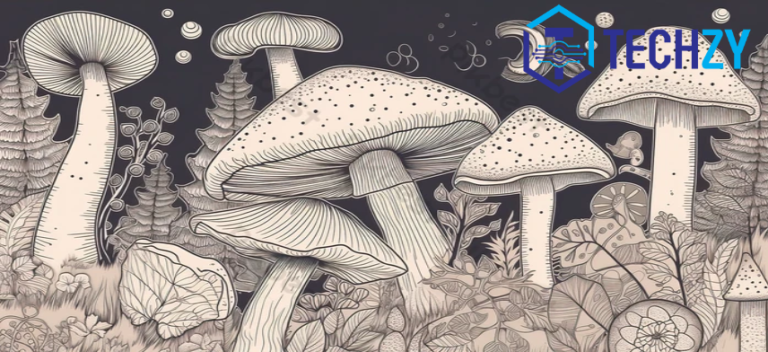Drawing mushrooms can be a satisfying adventure into the sector of herbal splendor and intricate details. Whether you’re a beginner simply starting out or an skilled artist seeking out new proposal, mastering to draw mushrooms opens up an infinite array of innovative possibilities. Drawing Mushrooms are available a whole lot of shapes, hues, and sizes, making them an wonderful subject for training shading, texturing, and composition.
In this guide, we’ll undergo the whole thing you want to understand to draw mushrooms effectively. We’ll discover the basics, dive into different mushroom shapes and textures, or even cover pointers for adding realism and growing unique, imaginitive illustrations.
Getting Started with Mushroom Drawing
Drawing mushrooms may be as simple or as complicated as you need. Mushrooms offer a large range of shapes and textures, and they may be a fantastic situation for artists looking to enhance their potential to capture detail and natural paperwork.
When beginning, try that specialize in simple bureaucracy and operating as much as extra unique designs. Beginners can start with fundamental shapes, while intermediate and superior artists can test with textures and shading.
Materials You’ll Need
Essential Materials
Here are the important materials to help you get started with mushroom drawing:
Sketching pencils: Choose a range of graphite pencils from difficult (H) to smooth (B).
Eraser: A kneaded eraser is splendid for lightening unique regions.
Paper: Any cartoon paper works, although heavier paper is higher for ink or watercolor.
Inking pens: For including outlines and details.
Colored pencils or watercolor: For including coloration and intensity in your mushrooms.
Optional Materials
Blending stump: Helps combination and melt graphite.
Fine-liner pens: Great for elaborate detailing.
Markers: Ideal for adding ambitious shades and textures.
Understanding Mushroom Anatomy
To draw mushrooms appropriately, it facilitates to understand their shape. While there are thousands of mushroom species, they generally percentage those simple parts:
Cap
The top a part of the mushroom, which could range from flat to rounded or maybe conical. The cap is where most of the visual interest and element lie, making it a focus for artists.
Gills
Located beneath the cap, gills are the sensitive, rib-like systems that radiate from the stem to the edge of the cap. They vary in shape, size, and density across exclusive mushroom types.
Stem
Also called the stipe, the stem provides assist and can range in thickness, height, and texture. Some mushrooms have thick, stocky stems, whilst others are skinny and delicate.
Ring (or Annulus)
Some mushrooms have a hoop around the stem, left with the aid of the veil that when blanketed the gills. Not all mushrooms have this, but it adds an exciting feature for artists to seize.
Volva
A cup-like shape at the bottom of a few mushrooms. It often has a tough, uneven side, including any other layer of texture on your drawing.
Step-by using-Step Guide to Drawing a Mushroom
Here’s a step-by way of-step manual to growing a easy mushroom drawing:
Step 1: Outline the Cap
Start with a unfastened, rounded shape for the cap. Depending at the sort of mushroom, this may be a circle, oval, or extra flattened form.
Step 2: Draw the Stem
From the middle of the cap, draw two lines downwards to form the stem. Make it slightly narrower on the pinnacle and widen it at the base.
Step three: Add the Gills
Draw lightly spaced lines radiating from the center beneath the cap. These will represent the gills. Adjust the spacing based totally in your reference.
Step four: Add Texture and Detail
Draw tiny dots, traces, or shapes on the cap to add texture. You also can draw traces alongside the stem to provide it a difficult texture.
Step five: Shade and Blend
Start shading the mushroom to give it intensity. Lightly color the gills, leaving a few regions lighter for contrast.
Step 6: Add Finishing Touches
Go over your drawing with satisfactory-liners for a cultured look or add color with watercolors or colored pencils.
Different Styles for Mushroom Drawings
Realistic Style
A realistic style entails taking pictures each element of the mushroom’s anatomy. This fashion requires careful commentary and meticulous shading to seize the mushroom’s texture and shape as it should be.
Cartoon Style
A cartoon fashion simplifies the mushroom into basic shapes, frequently exaggerating positive features just like the cap or stem. This is best for amusing, playful illustrations.
Minimalist Style
Minimalist drawings are stripped down to essential strains and shapes. This fashion works well for developing icons or decorative patterns with mushrooms.
Adding Details and Realism
Adding Texture
Mushrooms are regularly blanketed in small spots, scales, or textures. You can obtain this via including tiny dots, crosshatches, or quick traces at the cap and stem.
Incorporating Light and Shadow
To make your mushrooms look three-dimensional, pay attention to the mild supply. Shade the other facet of the light to create intensity. Try the use of slow shading for smoother textures and move-hatching for rougher textures.
Final Touches and Shading Techniques
Blending
Use a blending stump or your finger to easy out your shading, developing gentle transitions. This works properly for practical mushrooms.
Cross-Hatching
Cross-hatching involves layering sets of parallel strains over every different to build texture and shading. This method provides depth and interest.
Stippling
Stippling is a shading technique the usage of small dots. It’s effective for developing sensitive textures, especially on the mushroom cap and stem.
Creative Ideas for Mushroom Illustrations
Mushroom Villages
Imagine a woodland scene with mushrooms as houses. Add doorways, windows, and pathways for a magical look.
Fantasy Mushroom Creatures
Transform your mushrooms into tiny creatures by way of including faces, palms, or legs. This technique is perfect for delusion art or kids’s illustrations.
Botanical Mushroom Studies
Create a systematic-fashion drawing with more than one styles of mushrooms at the equal page. Label each with their common and scientific names for an academic contact.
Mushroom Patterns
Draw a repeated pattern of mushrooms in distinctive shapes and shades. You can use this pattern for wallpaper, fabric, or virtual designs.
Conclusion
Drawing mushrooms is a worthwhile activity that lets you discover nature’s beauty whilst growing your artistic talents. With exercise, you could capture the unique textures, shapes, and tricky information that make mushrooms such charming subjects. Experiment with exceptional patterns, from practical and special to whimsical and ingenious, to locate what resonates with you.
Whether you’re just starting or trying to make bigger your capabilities, mushrooms provide an infinite international of opportunities for inventive exploration.
FAQs
Q1: What’s the very best way to start drawing a mushroom?
Start by using gazing the basic form of a mushroom, consisting of the cap and stem. Begin with a easy outline, and steadily upload information inclusive of the gills, textures, and shadows. A reference image may be beneficial.
Q2: What are the great pencils for mushroom drawings?
Graphite pencils with one-of-a-kind grades (inclusive of H, HB, and B) allow for varied shading. Use harder pencils for light sketches and softer pencils for darker shading.
Q3: Can I use colored pencils or markers to shade my mushrooms?
Yes, each coloured pencils and markers work properly. Watercolors are also incredible for a smooth, natural look. Experiment to locate the medium that fine fits your style.
Q4: How do I add practical shading to my mushroom drawing?
To upload sensible shading, determine a mild source and observe gradual shading to the other aspect. Use blending techniques or cross-hatching to create intensity.
Q5: What’s the first-class manner to draw mushroom gills?
Draw the gills as flippantly spaced strains radiating from the stem below the cap. Practice to obtain a natural look, and recollect that gills can range depending at the mushroom species.


